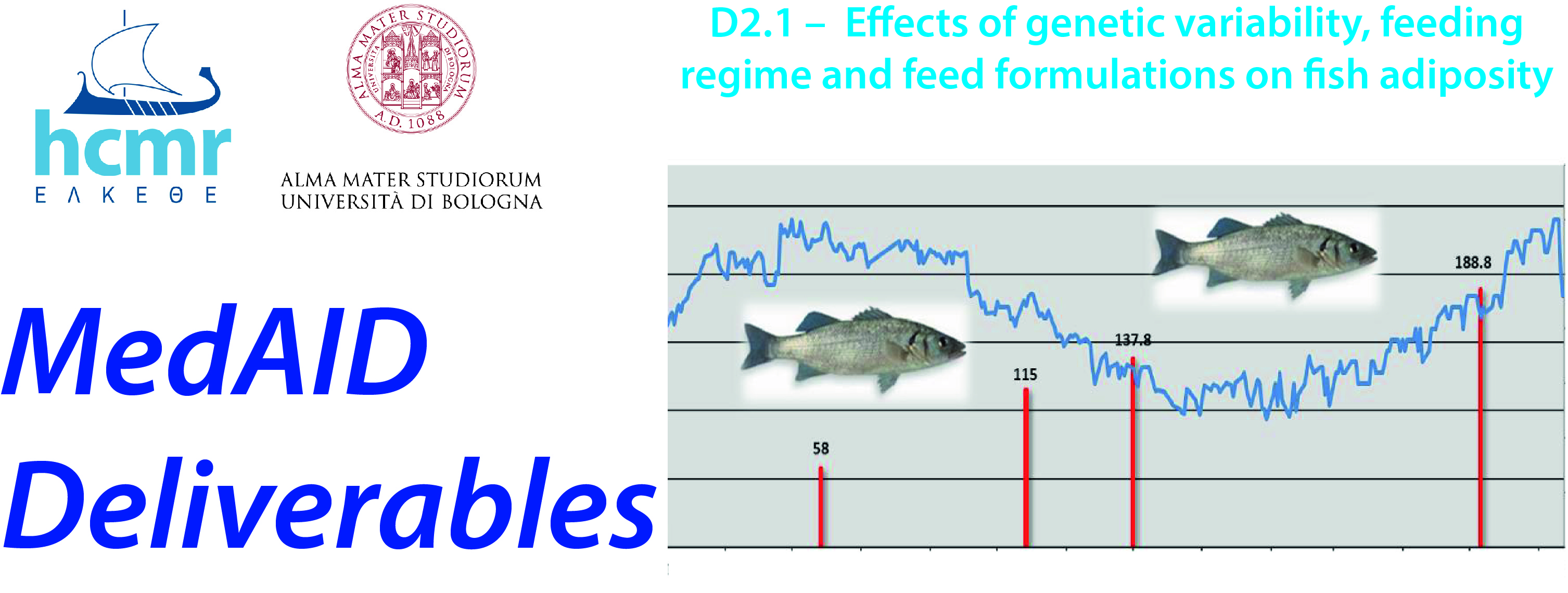MedAID Work-package 2 (Improving Zootechnical Performance) starts from the current context of knowledge in fish nutrition, and considers work on improvement in rearing conditions and feeding strategies fundamental to improve their related Key Performance Indicators (KPIs). This is a multidisciplinary WP that looks for correlations among different parameters related to feeding and growth.
The aquaculture industry seeks for shorter production cycles, implying faster weight gain, and targeting to reduce high fish somatic lipid reserves which decreases feed efficiency and fish quality. It is well-known that farmed fish accumulate substantial lipid amounts and significant perivisceral fat as they grow, due to intense feeding and lower physical activity. This remarkable lipid deposition significantly reduces feed utilization and product value.
Task 2.1 (Assessing the optimal feeding strategies in order to reduce the adipose tissue in commercial-sized fish) addresses the problem of fat deposition from a multidisciplinary approach in European seabass (Dicentrarchus labrax) and gilthead seabream (Sparus aurata). Considering the different factors involved in adiposity, this task has focused on the influence of the origin of fish, the impact of feed formulation and feeding strategies in order to reduce the adipose tissue in commercial-sized fish. The work implemented here was organized in two main research objectives, Subtask 2.1.1, which looked at the “Evaluation of the hormonal differences between lean and fat fish” and Subtask 2.1.2, which looked at the “Effect of feed composition and temperature on fat deposition”.
The condition factor and perivisceral index can be considered as trustworthy parameters for a justifiable distinction between fatty and lean fish (Subtask 2.1.1). Fatty fish appeared to have decreased some immune related activities in fish sera, which could be related to a worse systemic humoral immune protection of these animals. Regarding skin mucus, the most interesting result was a significant decrease in the total protein levels present which could be correlated with the low activity detected for other enzymes related to immunity in extra lean fish and perhaps, with their metabolic status.
In addition, this study provided data on the effects of dietary lipid levels on fat deposition in seabass and seabream fed in summer, before entering winter, and fed in winter, before entering spring (Subtask 2.1.2). In both species, there was only a temperature effect on SGR and FCR but not a dietary lipid effect. In seabream, a better conversion rate when entering the spring period was observed and, in addition, a low dietary lipid level improved feed intake during seasonal changes. After seasonal temperature changes higher perivisceral fat content was observed in seabream fed the high lipid diet, an observation not made in seabass where muscle lipids were increased. In seabream, a low dietary lipid level seems more appropriate during seasonal temperature changes.
Access to the full deliverable

